Building a mailing list is the best way to communicate with your subscribers and inspire them to click on your calls-to-action.
However, sometimes your email subscribers stop interacting with your email campaigns. This phenomenon is known as subscriber disengagement and it can happen to every business. In some cases, your subscribers will even delete your emails without even reading your content. If this happens, you need to prepare yourself for the next step.
Dealing with disengagement will offer you the chance to increase your email engagement and get more conversions. To do so, you need to plan the perfect re-engagement strategy to turn your inactive subscribers into action takers.
In this article, we’ll see 6 amazing tips to re-engage your subscribers, boost your email marketing, and meet your sales KPIs.
Why is re-engagement necessary?
One of the reasons why subscribers disengage or unsubscribe is due to the content of your email campaigns.
If your subscribers receive irrelevant messages for a long period of time, they will lose interest in your brand and leave.
Furthermore, failing to address your subscribers as individuals through personalized messages will also lead them a step further away from your brand.
Whatever the reason that drove them away, though, you need to find a way to get them back on board. To do that, you simply need to leverage email personalization and automation.
If you feel that your selected platform doesn’t give you the necessary tools to personalize and automate your campaigns, then you can always experiment with different options.
Using some of the free email marketing services out there will allow you to find the best platform for your needs.
Now, if you think that it’s pointless to re-engage inactive users, let me tell you that acquiring new subscribers is more expensive than engaging your existing ones. According to statistics, it costs five times more to attract new customers than nurturing your old subscribers.
Having loyal subscribers who interact with your brand is your ticket to better sales and long term profit. So, it’s absolutely necessary to invest in re-engaging your inactive subscribers as it will help you boost your customer lifecycle marketing endeavors.
1. Send them exclusive offers and discounts
Everything starts with a great offer that your subscribers won’t be able to resist.
If your brand hasn’t sent your subscribers something to sweep them off their feet and take action, then you are really missing out.
Special offers and discounts can motivate your subscribers to buy from you even if they haven’t engaged with you for a while. However, to leverage their power you need to present them in the most effective way.
For instance, here’s how Kenneth Cole delivers an irresistible secret sale surplus to excite and re-engage its audience.
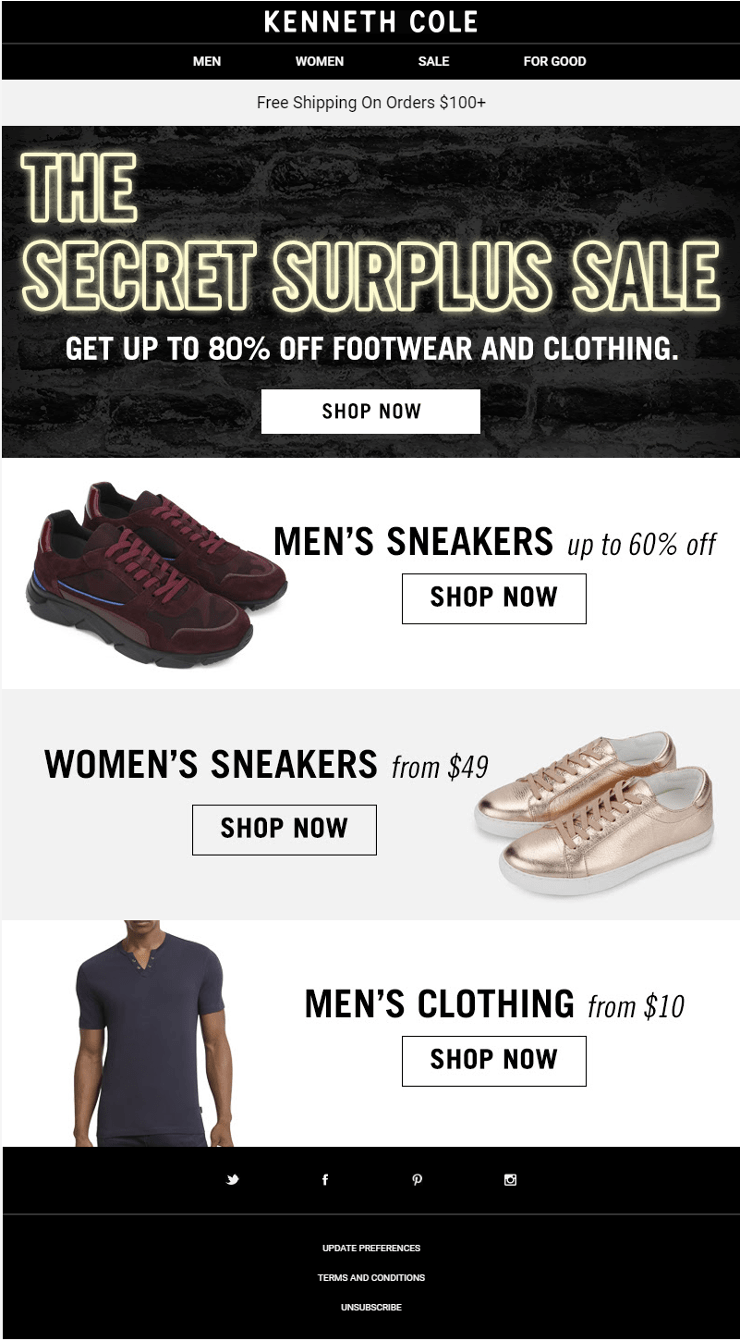
2. Create a ”goodbye” campaign
While discounts and offers are a powerful tool to drive engagement, sometimes your subscribers need to see something more.
Your best shot is to create a dedicated campaign telling them that you’ll stop emailing them. This “goodbye” email is effective since it will remind your inactive subscriber that they won’t receive emails from you anymore.
Such campaigns will trigger a response from your disengaged customers and incentivize them to get back. However, if you want your “goodbye” campaign to work as planned, you need to use the right elements.
Here’s, for instance, Paul Mitchell’s “goodbye” campaign. If you look closely, you’ll see that both copy and visuals co-operate effectively to convince the subscriber to stay.
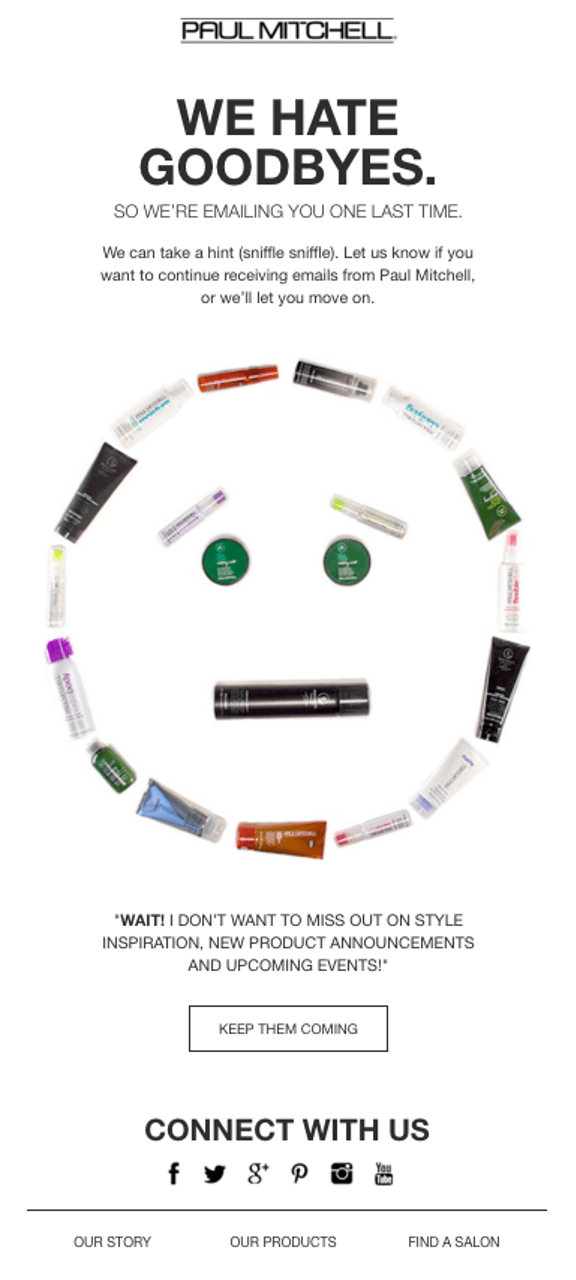
The brand aces its visuals using the image of a sad face to show the importance of the message. Then, the copy carries the right amount of emotion to make inactive subscribers engage with the brand.
To work, make sure that your “goodbye” campaigns offer you dis-engaged subscribers more reasons to stay with you. Whether that’s an incredible offer or a heartfelt message, that’s up to you.
3. Send personalized email campaigns
To re-engage your subscribers, you need to deliver content tailored to their needs. Neglecting to add personalization in your email marketing strategy will result in lower engagement and conversion rates.
So, even if you forgot to personalize your messages the first time, you can target them anew with a few personalized messages.
According to statistics, 50% of companies believe that personalization can boost email interaction among subscribers and drive better open and click-through rates.
Consequently, personalized content is vital to show your audience that you care about them. If you want to boost email engagement, you need to leverage your email marketing automation tools. You can use email personalization along with segmentation to deliver personalized messages that your subscribers will be eager to click on.
These messages can be an exceptional birthday or anniversary email to celebrate your subscribers’ special day.
Here’s an example from H&M:
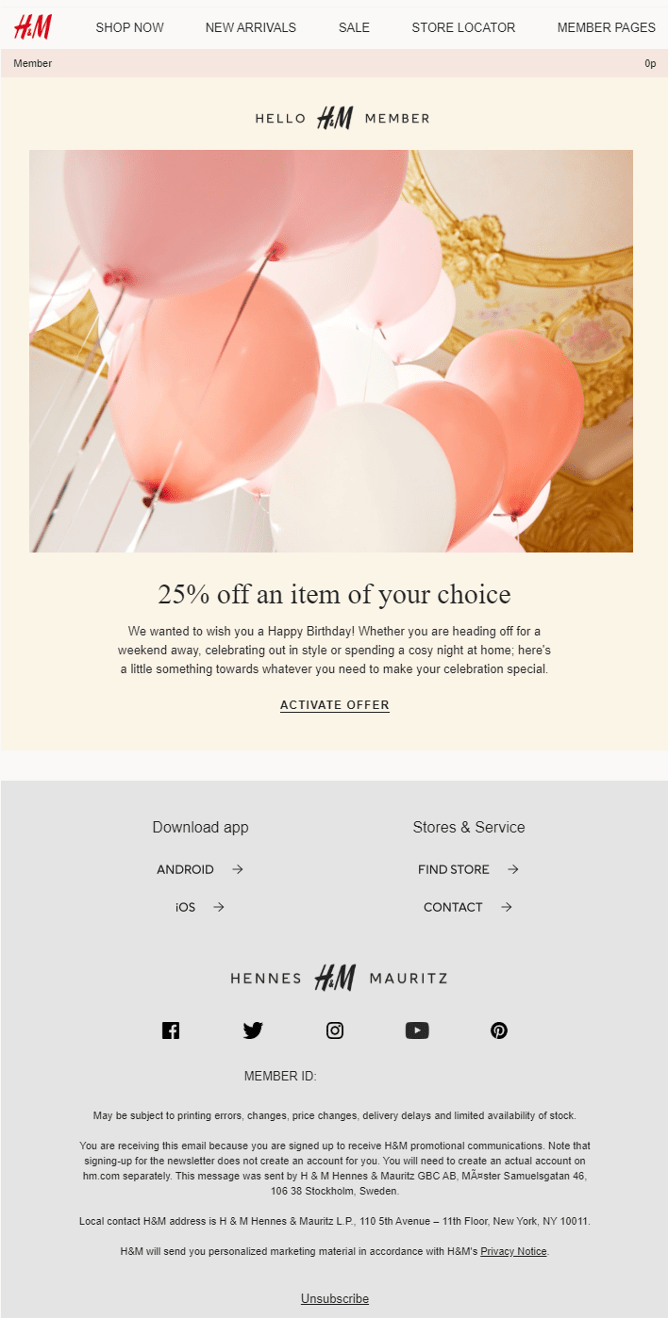
4. Plan giveaways and contests for your subscribers
If you take a look around social media, you’ll see that giveaway posts are a vital part of every successful Instagram marketing strategy. With this in mind, you can leverage this practice to boost your email engagement beyond measure. What you need to ace your giveaway or contest email is an amazing reward that will pique their interest and make them click.
To engage your subscribers with your giveaway campaign, make sure that you clearly state the rewards and what your subscribers need to do to participate. Then, add visuals of the reward and highlight the benefits with an amazing copy.
Organizing an awesome giveaway will work as a wake-up call for your inactive subscribers who will watch your emails closely for another giveaway.
For instance, Sweetwater has created a giveaway campaign that’s hard to miss:
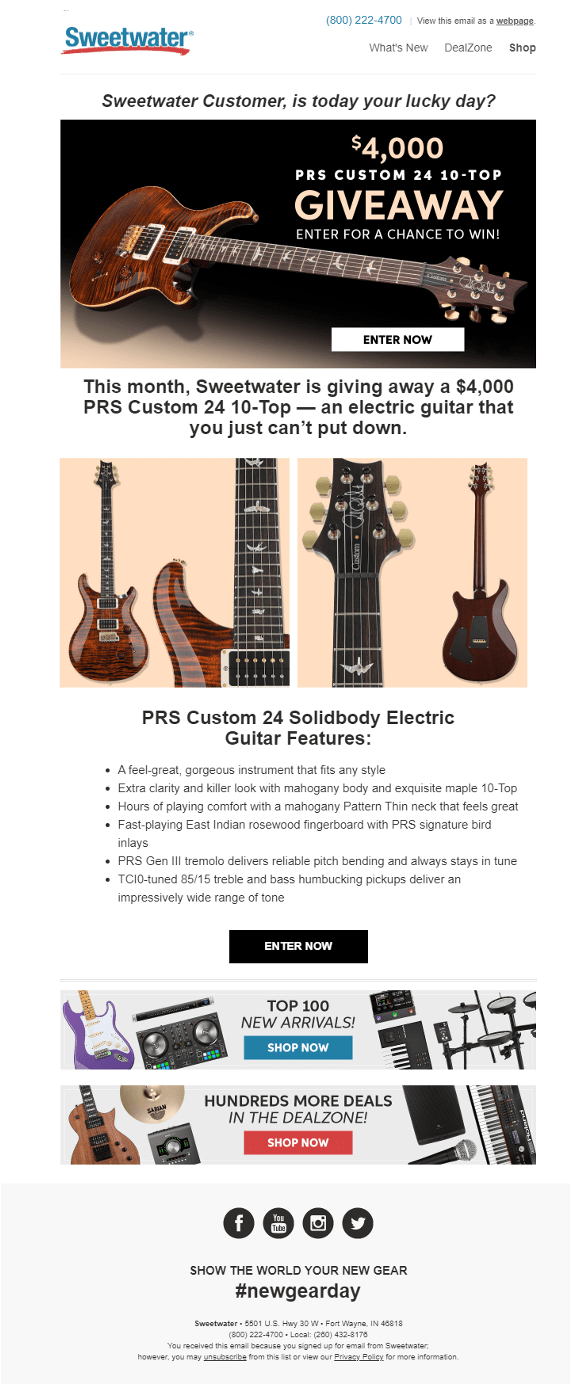
5. Collect feedback to improve your messages
As we said before, your subscribers might give you the cold shoulder without warning. If you notice that more and more subscribers start ignoring your campaigns, then it’s time to ask them what went wrong.
Collecting valuable insight into your brand and your messages will allow you to optimize them accordingly.
To collect feedback, create an amazing campaign asking for your subscribers’ opinions. A survey or a questionnaire, for instance, are both great ways to see what your subscribers want to see. You can also infuse your feedback campaigns with a nice reward to ensure that your subscriber will engage with your campaigns.
That way, you’ll manage to improve your future campaign, minimize disengagement, and engage your subscribers with a reward at the same time. Here’s a simple example of a feedback campaign by Food52:
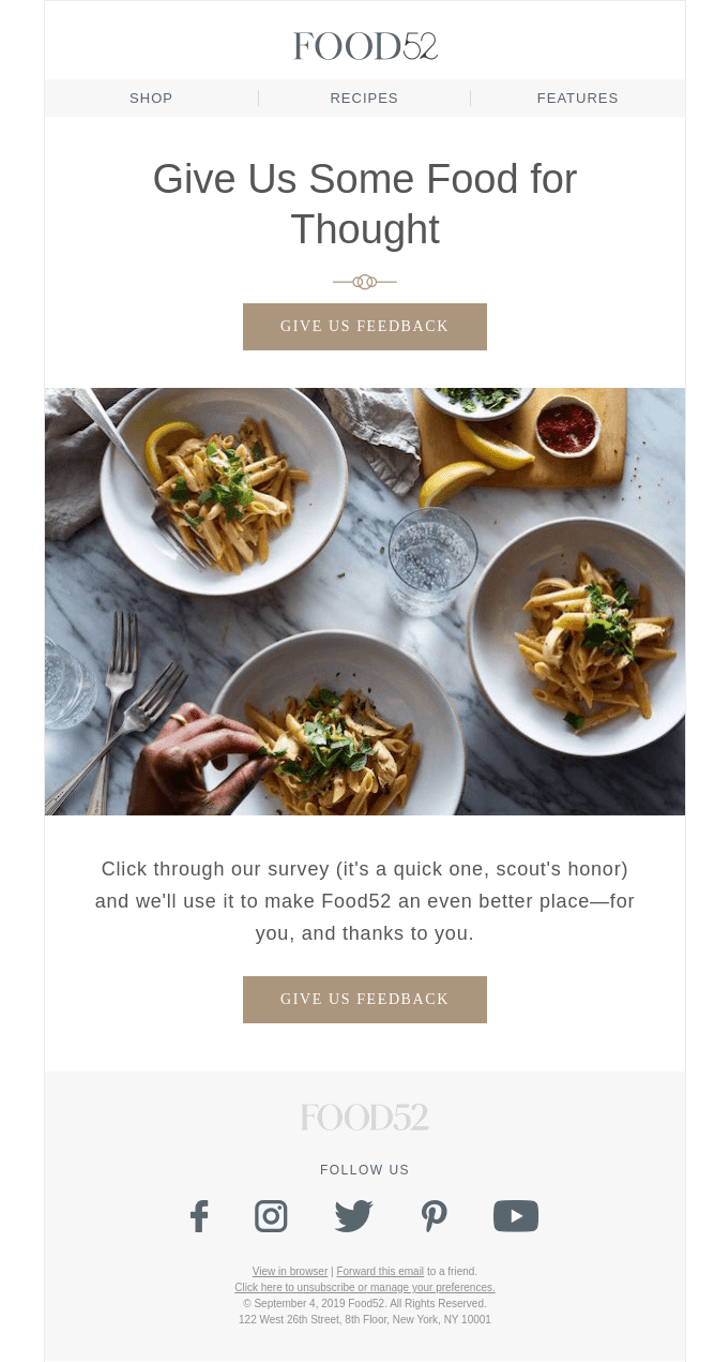
6. Improve your subject lines
If you’ve come up with killer content and irresistible CTAs but your inactive users still remain silent, then you might’ve missed the most important part of your campaigns.
Your subject lines are the first thing your subscribers come across when they open their inbox. If your subject line looks boring or suspicious, then your audience will delete or flag your emails.
That will not only lower your engagement rate but also decrease your email deliverability and harm your sender reputation.
To avoid that, make your subject lines as clear as possible and get rid of spammy words. As a result, your audience will open your campaigns and engage with your CTAs more frequently. The more you optimize your subject lines, the better you’ll re-engage your inactive subscribers.
Here’s an example from Ipsy, a brand that uses the effect of “sneaking a peek” to excite its subscribers and make them open the email.
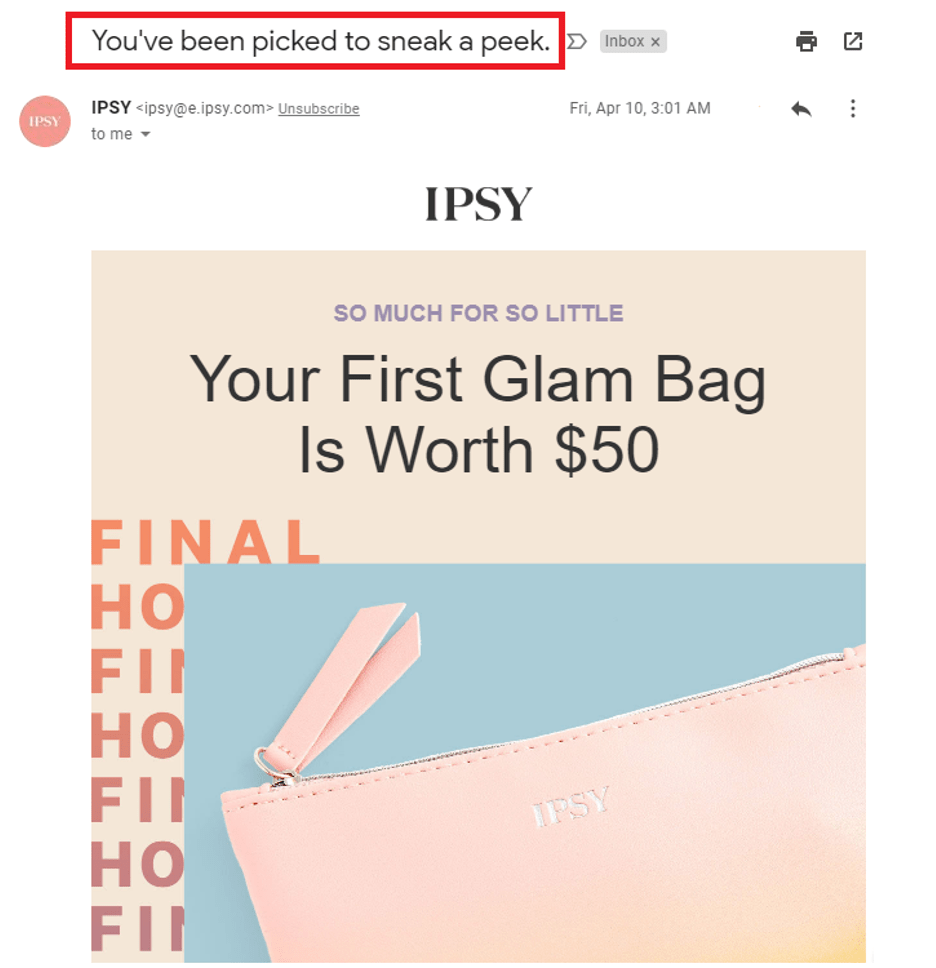
Takeaway
To have a successful business, you need to have loyal subscribers who will take action every time you send them an email campaign.
Re-engaging your inactive subscribers will not only minimize acquisition costs but also give you the chance to turn them into loyal supporters of your company and show them that you care about them.

